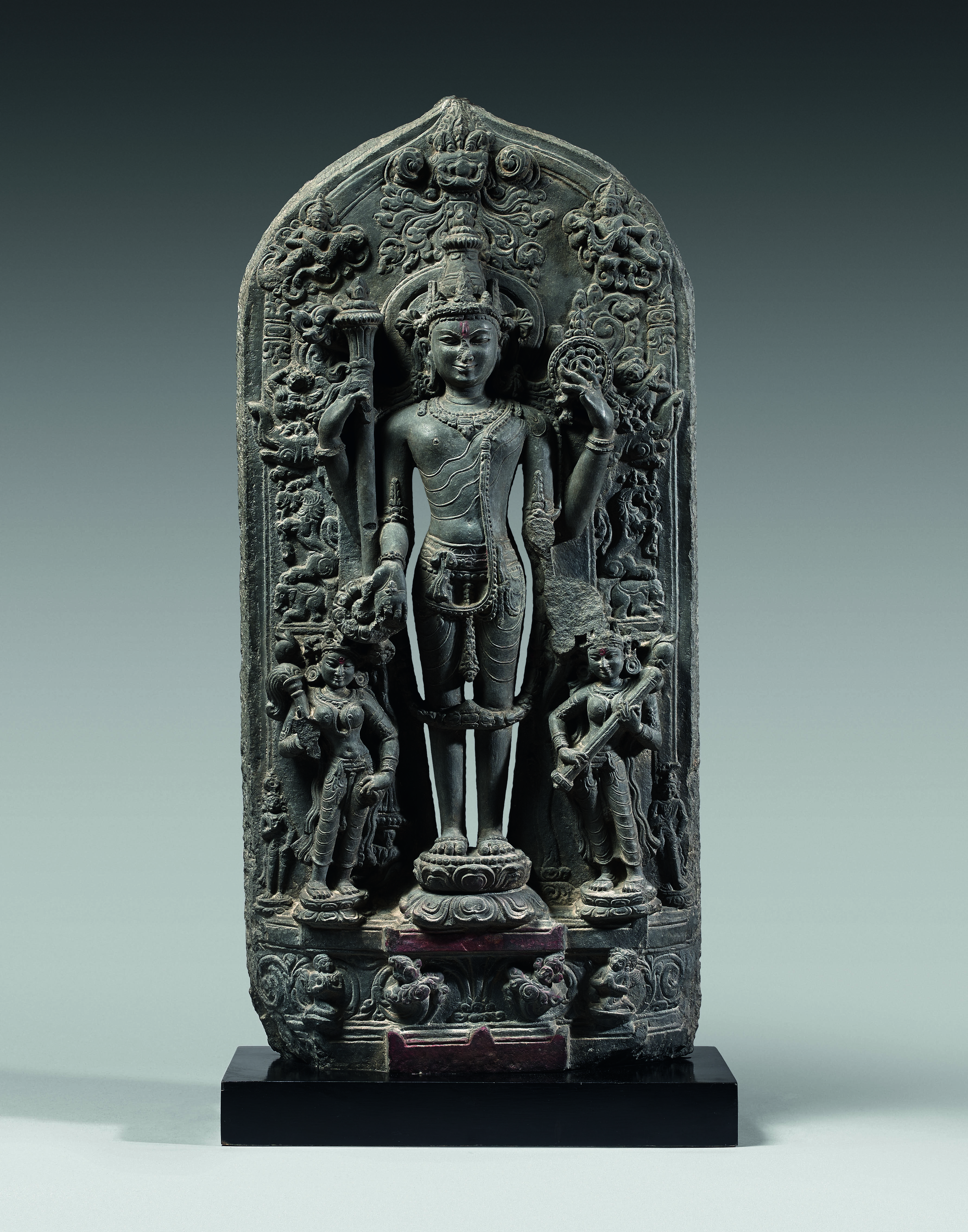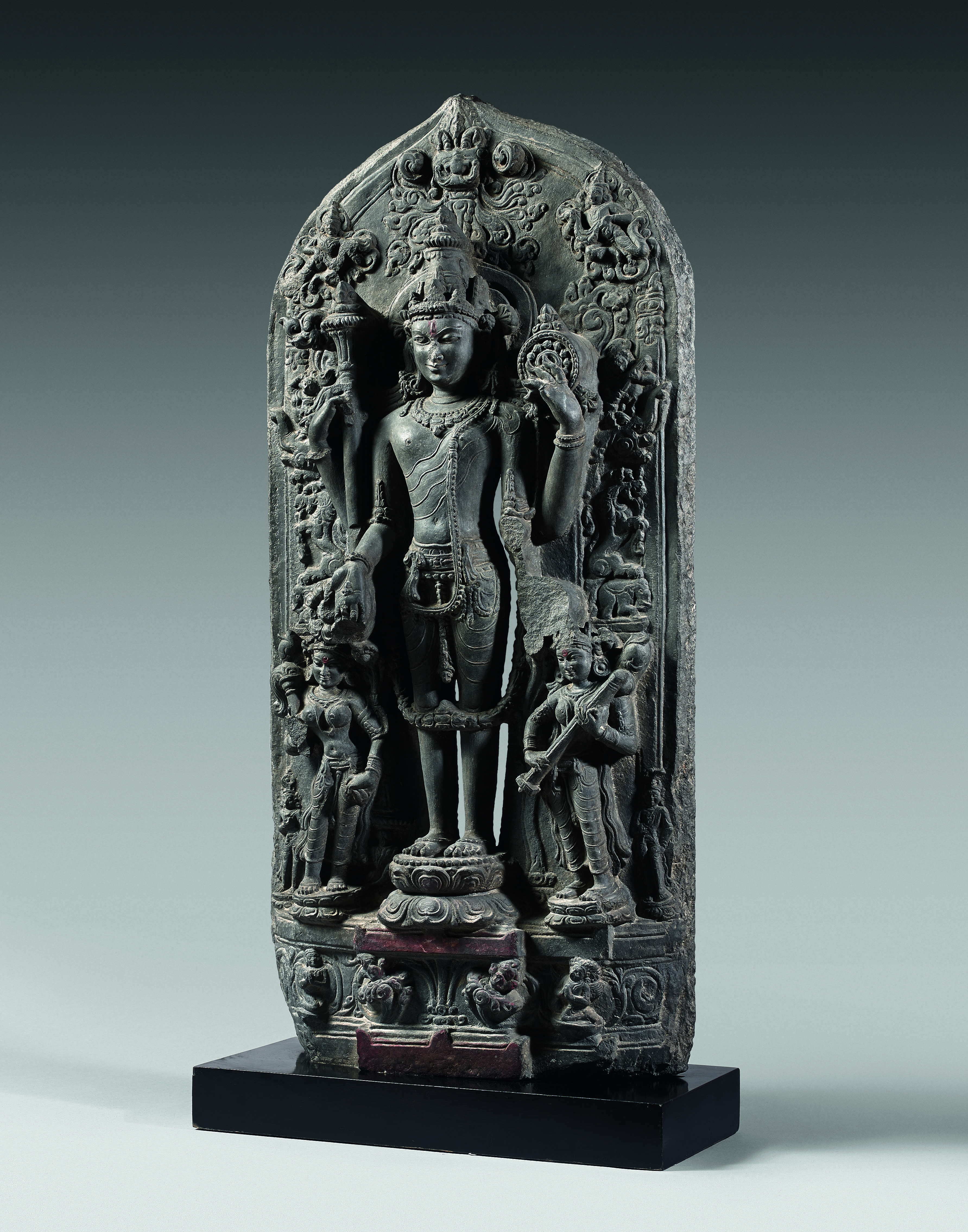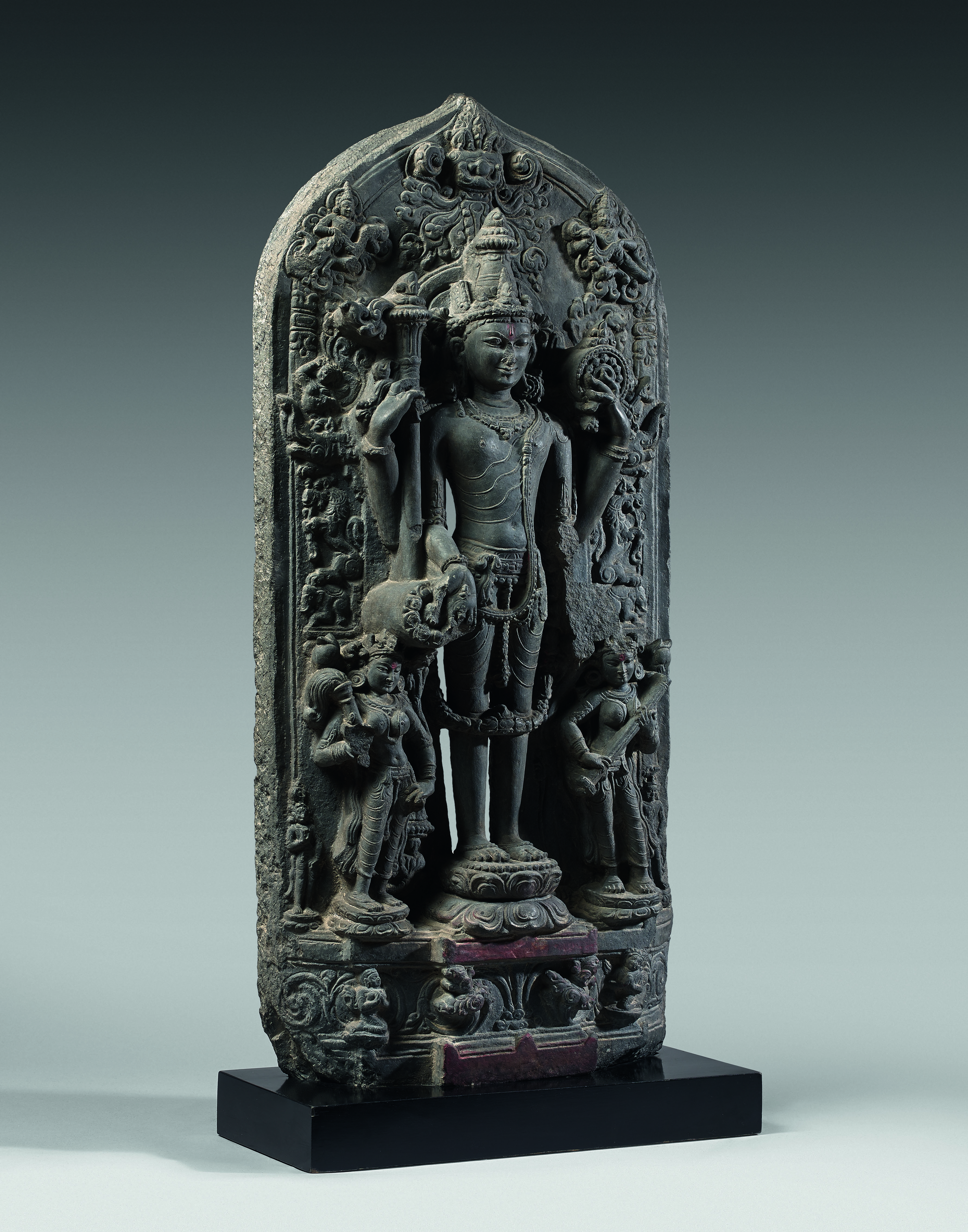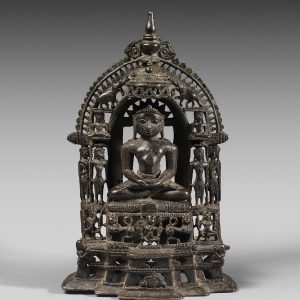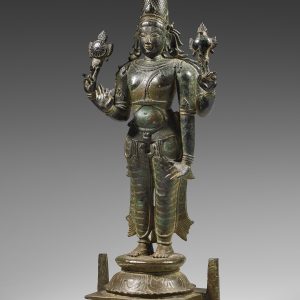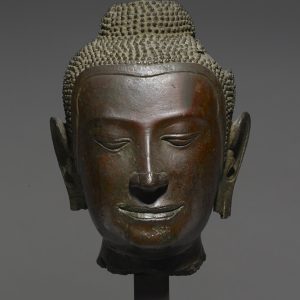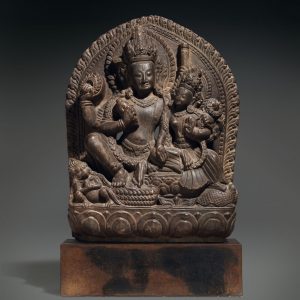Viṣṇu
Schist
India
Circa 11th century, Pāla Dynasty (9th – 11th century)
H. 72 cm or 28 ⅜ in
Description
A magnificent schist stele of Viṣṇu Vasudeva, supreme god, wearing the royal tiara (kirīta). Viṣṇu can be identified by the symbols he holds in his hands: the mace (gadā) in the raised right hand, the discus (chakra) in the raised left hand while the lower right arm is in the outstretched boon-giving gesture (varadamudrā). The head of the god is surrounded by an oval halo decorated with lotus petals.
Following the standard iconography for this type of depiction, flanking the figure of Viṣṇu are his two wives carved in dynamic postures, contrasting with the formal rigidity of his figure. To the right of Viṣṇu is Lakṣmī, his wife and the goddess of good fortune, holding a fly-whisk, the symbol of royalty and happiness. To his left is Sarasvatī, goddess of knowledge, wisdom and the arts, who can be recognized by the string instrument (vina). Two small figures next to the goddesses represent personified attributes of Viṣṇu.
Viṣṇu is standing on a pedestal decorated with lotus flowers. On the lower part of the stele are Garuḍa – the half-human, half-bird steed of the god Viṣṇu – and a female divinity, both worshipping the god. In the mid-section on both sides are rampant lions (vyālaka) atop elephants. At the top of the stele is the kīrtimukha, the mask whose role is to provide magical protection, flanked by two flying celestial creatures with garlands (Vidyādhara).
Viṣṇu is wearing a long dhoti which falls in parallel folds to his ankles. It is held at the waist by a decorated belt. We can also see the richness and finery of jewelry of unspeakable beauty on his chest, arms and ears. This magnificent stele, still in excellent condition, is admirable for its flowing and elegant composition.
From the 8th to the 12th century, the states of Bengal and Bihar produced sculpture in black and grey stone, essentially Buddhist under the Pāla dynasty (8th to 11th century), then Hindu under the reign of the Sena, of Brahman origin (11th and 12th centuries). It was specifically under the Pala and Sena reigns that the great university of Nalanda reached its peak of glory, attracting thousands of students from numerous countries to the largest religious and scientific teaching complex of its time.
For a similar piece, see the Viṣṇu Vasudeva, 11th-12th century, Pala period, J.W. Alsdorf collection, or consult Huntington, Susan, Leaves from the Bodhi Tree : The Art of Pāla India (8th – 12th centuries) and its International Legacy, Hong Kong, 1969.
Provenance: La Companie de la Chine et des Indes, France, since 1962.
- Banerjea, Jitendra Nath, The Development of Hindu Iconography, Calcutta: University of Calcutta, 1956.
- Banerji, R.D., Eastern Indian School of Mediaeval Sculpture. Delhi : Manager of Publications, 1933.
- Huntington, Susan, The « Pāla-Sena » Schools of Sculptures. Leydes : E J. Brill, 1984.

